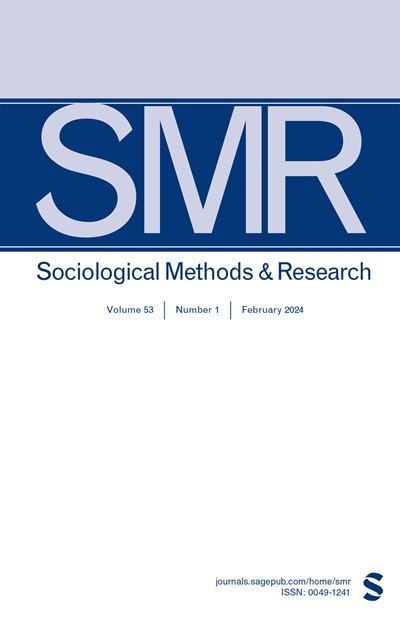基于设计的监督学习修正图像分析中人工智能辅助标注的测量误差
IF 6.5
2区 社会学
Q1 SOCIAL SCIENCES, MATHEMATICAL METHODS
引用次数: 0
摘要
生成式人工智能(AI)在各种形式的数据(包括文本、图像、音频和视频)上表现出了令人难以置信的飞跃。这使社会科学家能够从非结构化媒体中注释感兴趣的变量。在快速改进的同时,这些方法还远远不够完美,正如我们所示,即使忽略高精度系统中的少量误差,也会导致下游分析中的大量偏差和无效置信区间。我们回顾了如何使用基于设计的监督学习(DSL)通过使用少量专家注释来保证渐近无偏性和适当的置信区间覆盖。虽然最初是为了在文本中使用大型语言模型而开发的,但我们在图像分析的背景下提出了一系列应用程序,包括对抗议图像中感知到的暴力程度的视觉预测因素的调查,对Twitter上“黑人的命也是命”运动中分享的图像的分析,以及对美国媒体报道移民大篷车的研究。这些应用程序代表了今天在视觉社会科学领域中执行的分析类型,我们的分析将举例说明DSL如何帮助我们在使用自动化方法减少人力劳动的同时获得统计保证。本文章由计算机程序翻译,如有差异,请以英文原文为准。
Correcting the Measurement Errors of AI-Assisted Labeling in Image Analysis Using Design-Based Supervised Learning
Generative artificial intelligence (AI) has shown incredible leaps in performance across data of a variety of modalities including texts, images, audio, and videos. This affords social scientists the ability to annotate variables of interest from unstructured media. While rapidly improving, these methods are far from perfect and, as we show, even ignoring the small amounts of error in high accuracy systems can lead to substantial bias and invalid confidence intervals in downstream analysis. We review how using design-based supervised learning (DSL) guarantees asymptotic unbiasedness and proper confidence interval coverage by making use of a small number of expert annotations. While originally developed for use with large language models in text, we present a series of applications in the context of image analysis, including an investigation of visual predictors of the perceived level of violence in protest images, an analysis of the images shared in the Black Lives Matter movement on Twitter, and a study of U.S. outlets reporting of immigrant caravans. These applications are representative of the type of analysis performed in the visual social science landscape today, and our analyses will exemplify how DSL helps us attain statistical guarantees while using automated methods to reduce human labor.
求助全文
通过发布文献求助,成功后即可免费获取论文全文。
去求助
来源期刊

Sociological Methods & Research
Multiple-
CiteScore
16.30
自引率
3.20%
发文量
40
期刊介绍:
Sociological Methods & Research is a quarterly journal devoted to sociology as a cumulative empirical science. The objectives of SMR are multiple, but emphasis is placed on articles that advance the understanding of the field through systematic presentations that clarify methodological problems and assist in ordering the known facts in an area. Review articles will be published, particularly those that emphasize a critical analysis of the status of the arts, but original presentations that are broadly based and provide new research will also be published. Intrinsically, SMR is viewed as substantive journal but one that is highly focused on the assessment of the scientific status of sociology. The scope is broad and flexible, and authors are invited to correspond with the editors about the appropriateness of their articles.
 求助内容:
求助内容: 应助结果提醒方式:
应助结果提醒方式:


